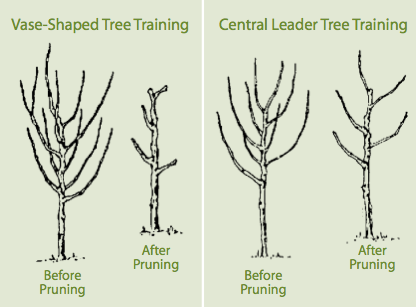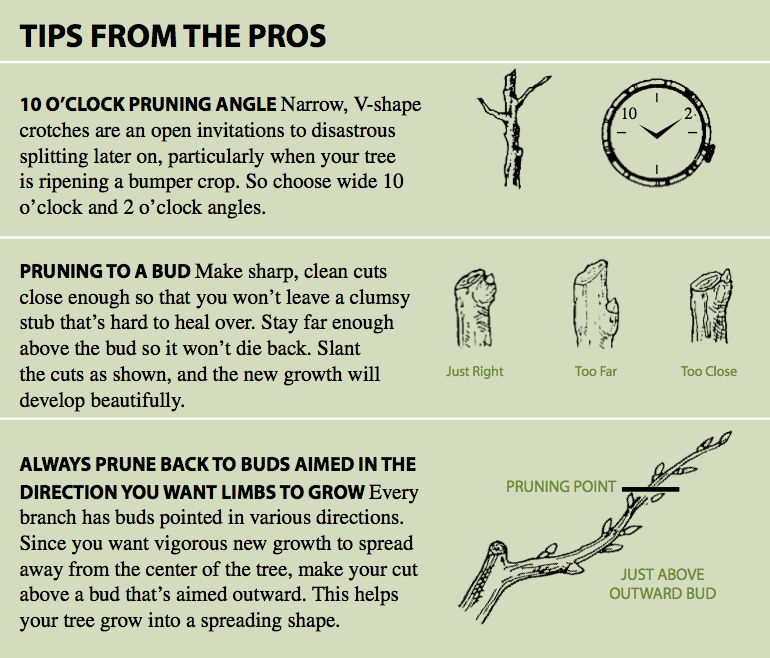You do not need a BA degree in pruning trees either fruit or shade trees. Most trees do best when pruned and trained to a central leader tree (one main stem). This type of tree has a pyramidal shape with a single upright leader limb as its highest point. This leader is the newest extension of a long, upright growing trunk from which all side branches arise. As with all strong growing branches, the leader should be headed back each year. The uppermost bud on the leader produces a vigorous new leader, and no other branch should be allowed to grow taller than the main trunk. Branches should be spaced vertically 4-6” apart, have growth that is more horizontal than vertical and point in different compass directions from the trunk.

Remove weak, diseased, injured or narrow-angle branches (the weaker of any crossing or interfering branches), and one branch of forked limbs. Also remove upright branches and any that grow toward the center of tree. You want to keep your tree from becoming too thick and crowded and to keep its height reasonable. All these objectives promote improved bearing, which is your overall aim. Try to achieve the general shape of the trees in the drawings provided but be sure to allow your tree to express its own individuality. You can not force a tree that grows 60’ into one that grows 20’.

Remove any basil shoots growing from the base of the tree. Also remove any broken branches, water sprouts (shoot growing straight up from a branch or downward from a branch, and sucker shoots around the base of the trunk.

1 comment for “Pruning Trees (fruit and shade)”